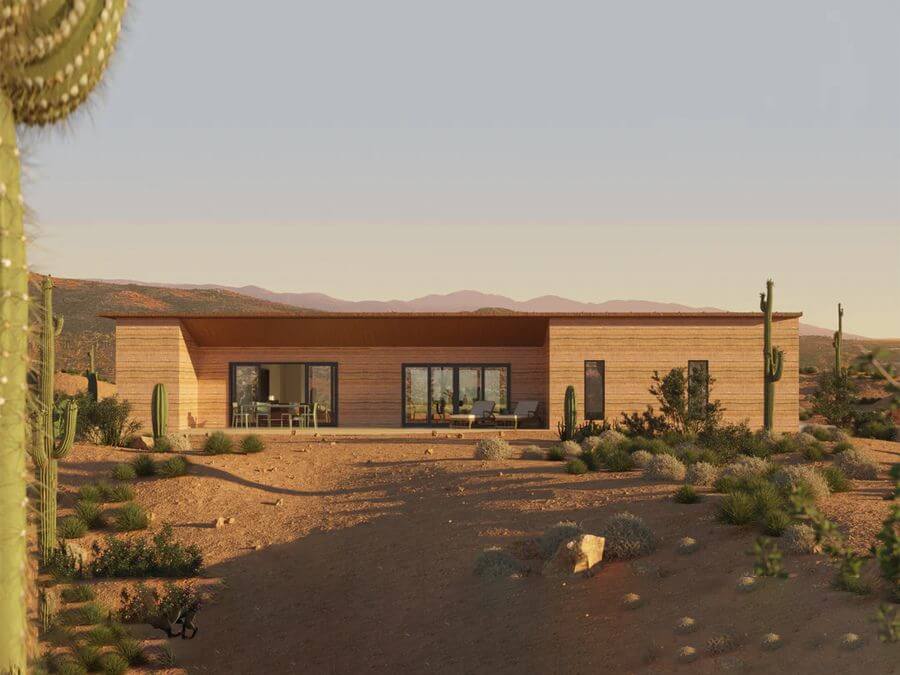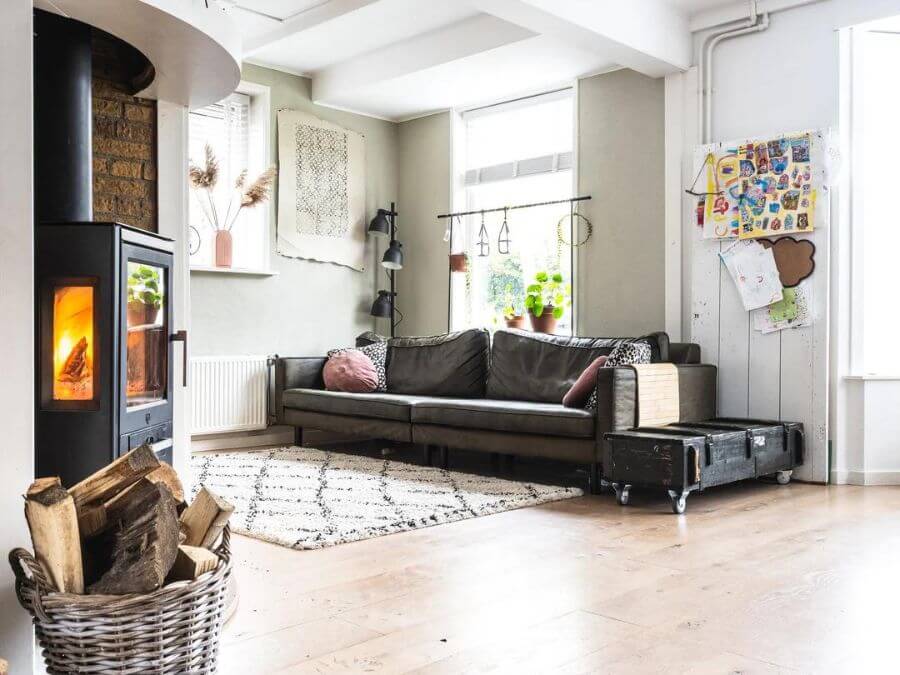Whether you already own a lot of land or have narrowed down the area in which you want to search, planning your own custom build can be a nerve-racking process. Only 20% of American homeowners have built custom homes, which can make it feel like uncharted territory. However, as a result of the Covid-19 pandemic, families’ desire to move away from big cities and build their own home closer to nature has skyrocketed.
With an extreme shortage of available homes on the market in relation to those looking to buy, people are realizing that the dream of building a custom home isn’t so far from reality.
Whether you are just starting to consider your own custom build, or are ready to break ground tomorrow, FRANK can walk you through the steps to make sure that you have a seamless, stress-free plan for your very own custom home build.
Step 1 - Set the budget.

This step is not so different from others who buy tract homes or older builds, but you must decide on your budget. Serial DIYers understand the danger of diving in without a budget and with projects as complex as a home build, things can escalate quickly. When budgeting for elements of your dream home here are a few questions to consider:
What is the timeline of your build and what seasonal delays are possible?
When will materials be purchased? Plan ahead with a blueprint, so you know precisely what materials are needed.
Which parts of the build are you willing and able to do yourself to cut down on labor costs?
If using a contractor or builder, what risks and protections are included in the agreement?
Step 2 - Find Land

There are a handful of key factors to consider when searching for the perfect plot of land to build on. First, It can be tempting to jump at a lower-priced lot, however, it is important to consult an expert that knows the details of the area to ensure the land is able to be developed within your budget.
Secondly, you should verify the soil type your lot is composed of. Verifying this from the start will ensure your lot is safe and cost-effective to build on. Additionally, you will want to check with your local zoning office about the lot you intend to build on. Some zoning offices have different limitations in place on the size of your build or certain design requirements.
Step 3 - Design your own dream house.

Designing can be the most exciting part of a custom build, but left unchecked, it can be hard to nail down. There are infinite pre-designed floor plans online and can be overwhelming to find what you are looking for.
When designing your custom home, consider both the size and layout and how they work to fit with you and your family’s lifestyle. Additionally, consider what your family might look like a few years down the road. A custom built home should meet your needs for much longer than just a couple years.
To make the design process more streamlined and personable, consider FRANK’s pre designed wood houses or test out our design software to mix and match the elements you love most.
If a true DIYer or already have a sketch it hand, it can be helpful to consult an expert, like FRANK design team, who knows how can advise on principal design elements, such as overall layout, roof design, or different finishes
Step 4 - Finance your home.

In terms of budgeting on a larger scale, next you are going to want to determine the amount you will need to borrow for your construction loan. You will need to begin by inquiring with banks about obtaining a construction loan.
When you present a detailed construction set, you are able to obtain a detailed bid from the builder. That way, you can be sure to borrow an accurate amount in your loan.
Step 5 - Assign responsibilities.
If you are hiring out any part of your build to a contractor or builder, you will want to set very clear expectations and timelines and have these laid out in a well-written contract. There are so many uncontrollable variables that can occur during a home build, you’ll want to make sure that everything within your control is buttoned up tight to make the process as smooth as possible.
When building a custom home, your role is the project manager to make sure things are moving along on schedule and to help arrive at the best possible solution if any issues are to arise. Frequent and honest communication with all decision makers is necessary to alleviate frustration, and a clear understanding of who is responsible for what can eliminate many issues before they even arise. It is paramount to have a well-formulated plan in place from the start, as quality is just as important as efficiency in the process.
Step 6 - Collect your permits.
Depending on who you hire to help with your build, and especially if you're taking on the build yourself, you will be responsible for getting the necessary permits required by your area. A building permit is a government-issued document that gives approval to begin construction on your property. Permits exist to ensure that builders and homeowners are complying with local zoning and construction regulations.
Most states require a professional blueprint and site plan to apply for a permit. For larger homes, most counties require an architect license to get a permit for a building design greater than 3,500 square feet or above two stories.
For certain areas that have specific weather concerns, an engineering license stamp may be necessary on the home design to obtain a permit. States like California may have a special permit requirement like a Title 24 Energy Report. These reports are to ensure minimal harmful and unnecessary energy consumption in your new home construction.
Permits differ based on state and sometimes county, FRANK is happy to help you prepare you for the process of applying for permits by verifying that your design is up to code. That way you will have everything you need to start your build with peace of mind.
Step 7 - Start Building

You can finally watch all your hard work rise from the ground up. Regular check-ins with your builder will streamline communication and maintain transparency throughout the process.
First, the site preparation crew will clear your lot of any debris, rocks, or trees to prepare the land for laying the foundation. Footings will be put in place to provide a template of where the foundation will be. The foundation is then poured and often sealed with a waterproof membrane. A city inspector will then verify that your foundation is up to code.
After the foundation is set, your builder will complete a rough framing of the home. The floor systems, walls, and roof systems are all constructed. This is often what is known as the skeleton or shell of the home.
Once the skeleton is in place, rough plumbing, electrical, and HVAC will be installed. At the same time, siding and roofing may also be installed. Framing, plumbing, electrical systems are all inspected to ensure they are up to code.
Insulation and drywall are next to be installed. Interior trim, window sills, door frames, cabinets and vanities alike are all put in place. Exterior walkways and driveways may also be laid at this time.
The finishing and final steps include flooring, countertops, light fixtures, and exterior landscaping. Your builder will then complete a final walkthrough to acquaint you with the systems and features of your new home.
Step 8 - Schedule inspections.

Based on your build type, area, and permits, multiple inspections may be required throughout or and surely at the completion of your build. Inspections are necessary to ensure that new, custom homes are being built to the most up-to-date safety standards. Even if you intend to live in your custom dream home forever, if the home is ever sold, having a solid record of inspections throughout the build process will be necessary and will make your life so much easier.
Step 9 - Finishing touches.

Regardless of your timeline, you are surely glad to be at the end of your building process. As you admire your own dream house that is a reflection of your style, taste, and DIY skills, there are now some finishing touches that aren’t necessarily part of the build. These things can sneak up on you if you haven’t factored them into your budget or timelines. Some things to consider are:
- Landscaping
- Clean up
- Outdoor living spaces
- Moving expenses
- Interior design
If your budget allows, it may be wise to hire an interior designer to be apart of your team. A builder or contractor lack the in-depth knowledge of what pieces may work in a certain space. Having the additional layer of expertise will guarantee style and functionality.
The custom home build process is such an exciting and rewarding process. To take ownership over the design and build of your own home is definitely something to be proud of. FRANK is here to help you out along your dream house journey and make it the best experience possible.
Contact us today to learn more about how FRANK designs are perfect for your dream house build.




